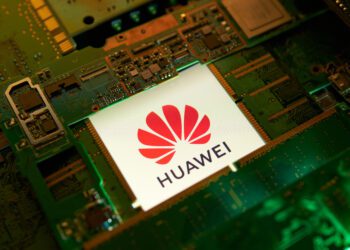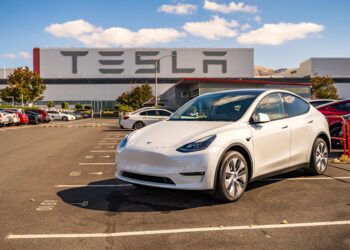As we all know from experience, the energy industry has endured significant upheaval over the past decade. The pandemic brought further disruption, forcing utilities to invest in new technologies to support remote working and field worker safety. In the research for our Technology Vision 2021, 99% of utilities executives said the COVID-19 pandemic created an unprecedented stress test for their organizations. Furthermore, technology architecture was ranked as the area where the stresses were greatest.
While the world is now looking to move beyond the pandemic, the energy industry will feel its impact for years to come. Many countries will accelerate their decarbonization policies as part of COVID recovery programs, further intensifying disruption over the coming decade. Already, a majority (59%) of utilities executives report the pace of digital transformation is accelerating. The rest will follow suit soon.
A new leadership mindset is needed to drive success in the energy transition
As the energy transition gathers pace, it’s forcing a reinvention of how to deliver sustainable, affordable, reliable power. As competitive pressures intensify, new business models will be developed at a faster pace than many utilities are used to. A new technology infrastructure is needed to support this rapid innovation. And a new leadership mindset is needed to power a new era of transformation.
Why must utility infrastructure be replaced? The stark answer is that legacy architecture will be pushed well beyond its limits. This infrastructure was designed for a stable, predictable environment – not to support prosumers, EV charging, flexibility markets, or the rapid development and deployment of new business models.
Utilities also face new and significant competitive forces that will reshape the electricity value chain. Why? Because utilities are not alone in their pursuit of these new opportunities. Oil majors will increase their investments in renewables and storage, while telcos in deregulated markets will increasingly bundle power with other services. And cloud-native start-ups will threaten incumbents with Amazon-like customer-centric business models.
To ride out these disruptions and turn them to their advantage, utilities should harness technology innovation. The five trends called out in our Technology Vision 2021 show how they can do this.
Stack strategically
By stacking strategically, utilities will maximize the benefits from advances in technology by architecting a better future. In our Technology Vision research, 83% of utilities executives agree that their organizations’ business and technology strategies are becoming inseparable – even indistinguishable. Selecting the right technologies to support changing future needs is required, including how to adopt new cloud-native business models. For the new utility leadership, mastering change means mastering technology selection and integration. For many this will mean shifting to a modular, vertical landscape built on micro-services. An adaptive, reusable approach to technology and a fresh strategy to application development will create an architecture that allows the business to travel in new directions – at pace.
Mirrored world
As utility leaders thread technology through all aspects of the business, the data generated is used to build massive networks of intelligent digital twins. The mirrored world these next-generation twins create is fueling change by unlocking the currently trapped value of data and allowing utilities to simulate, predict, and automate by seamlessly bridging the divide between digital and physical.
This mirrored world will facilitate an agile and intelligent future for the industry. A digital twin becomes the energy system’s system of record, and an essential strategic planning tool for asset managers, regulators, policy makers, and transport system owners – a shared analytics platform to perform scenario planning from large-scale generation through to customer modelling. Many have already started their digital twin journey: 28% of utilities executives report their organizations are experimenting with digital twins this year.
I, technologist
Technology democratization places powerful capabilities with all utility employees. It augments existing technology approaches to innovation by putting the right tools in the hands of staff. And it decentralizes innovation, where staff are free to innovate on their own, in their own timeframes, without the need for specialized IT resources. An overwhelming 87% of utilities executives believe technology democratization is becoming critical in their ability to ignite innovation across their organization. All utility employees can become innovators, using RPA, NLP, BI tools, and low-code or no-code platforms to innovate on the new business models that will deliver the energy transition. And this is not just for individuals: technology democratization also enables collaboration, within teams, between teams, and with stakeholders outside the organization.
Anywhere, everywhere
The mass move to work from home (WFH) has redefined working culture. Many industries have developed “bring your own environment” (BYOE) strategies to address the security ramifications of remote work. Clearly, the utilities industry—given its unique governance frameworks—won’t be able to fully embrace remote working for its asset-focused workforce. But utilities can apply BYOE best practices in customer operations, and use them to optimize flexibility within regulatory constraints. This will be done by deploying new technologies—particularly 5G, edge computing, and self-serve analytics—which will help utilities to create a new environment that enables a very different way of working in the field.
From me to we
The energy transition creates many new opportunities to generate additional value. 91% of utility executives state that multiparty systems will enable their ecosystems to forge a more resilient and adaptable foundation to create new value with their organization’s partners. But these new business models create a more varied and complex energy value chain, which is no longer linear but diffuse and decentralized. Importantly, utilities will no longer own all of this infrastructure.
Rather, it will be a multiparty system: a data-rich infrastructure shared between stakeholders that drives efficiency and builds new business and revenue models. Based on technologies including blockchain, distributed ledger, distributed database, and tokenization, these multiparty systems will enable business model changes that maximize returns within the new environment. They will help different stakeholders manage the rapidly increasing deployments of electric vehicles (EVs) distributed energy resources (DERs) the creation of virtual power plants (VPPs) and support flexibility programs. How? By creating a trustworthy and resilient data sharing platform as the foundation for existing and future partnerships.
What’s next?
That’s how our Technology Vision is helping to shape the future as utilities focus on delivering the energy transition in the post-pandemic world. Contact me to learn more.
By Paula Clark
About the author: Paula Clark is Managing Director, Technology Consulting, Resources, at Accenture.
This article originally appeared at https://www.accenture.com/us-en/blogs/accenture-utilities-blog/utilities-tech-vision-become-a-master-of-change and is republished with permission.












